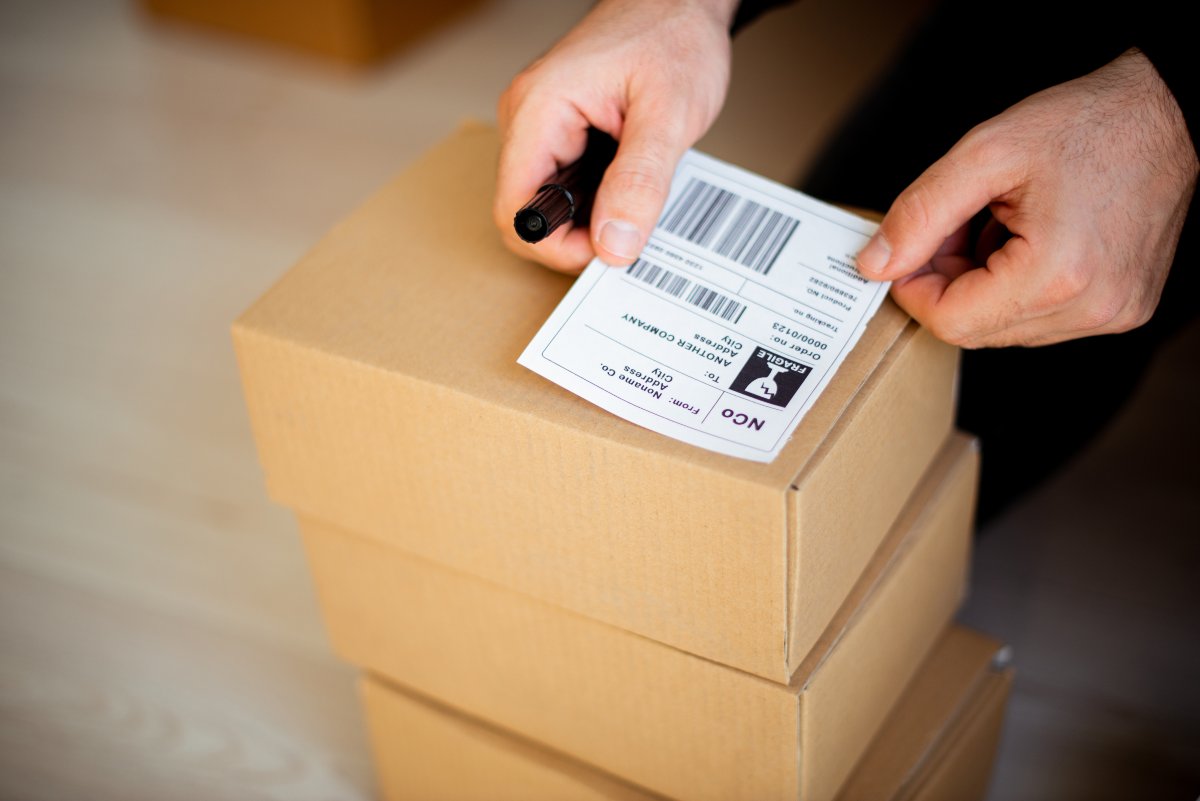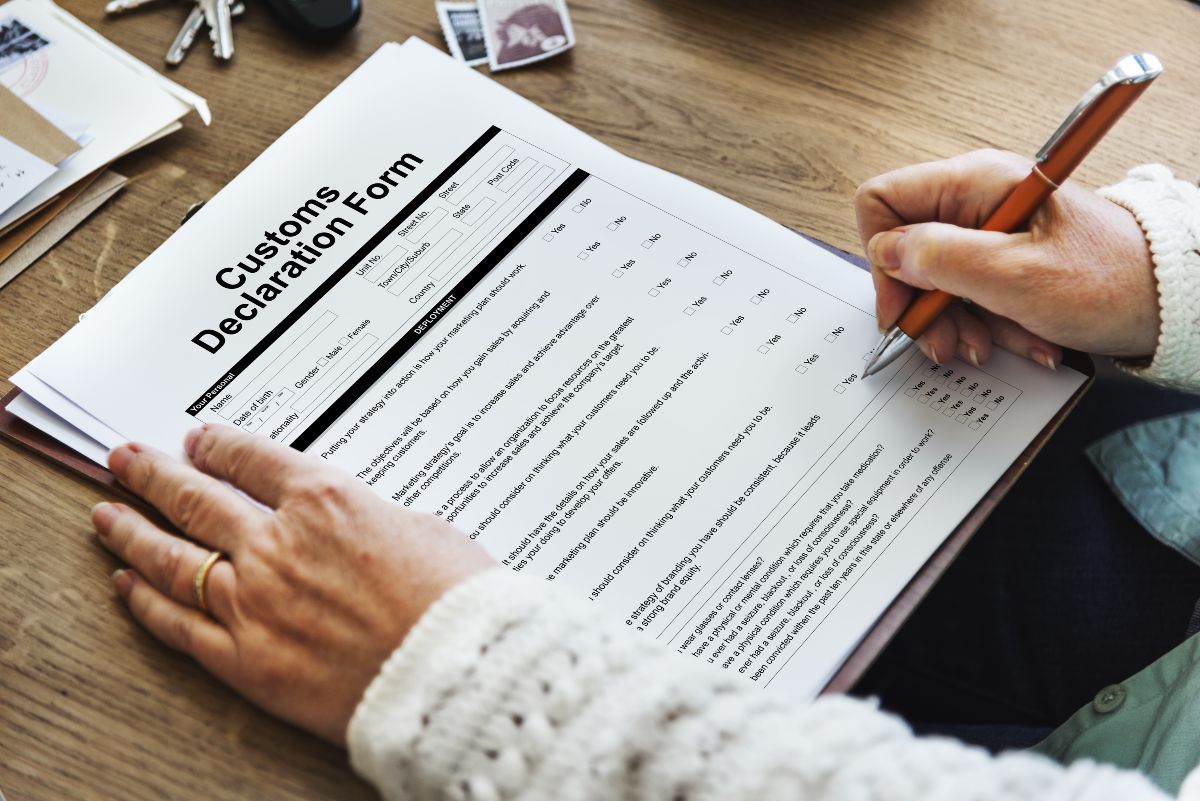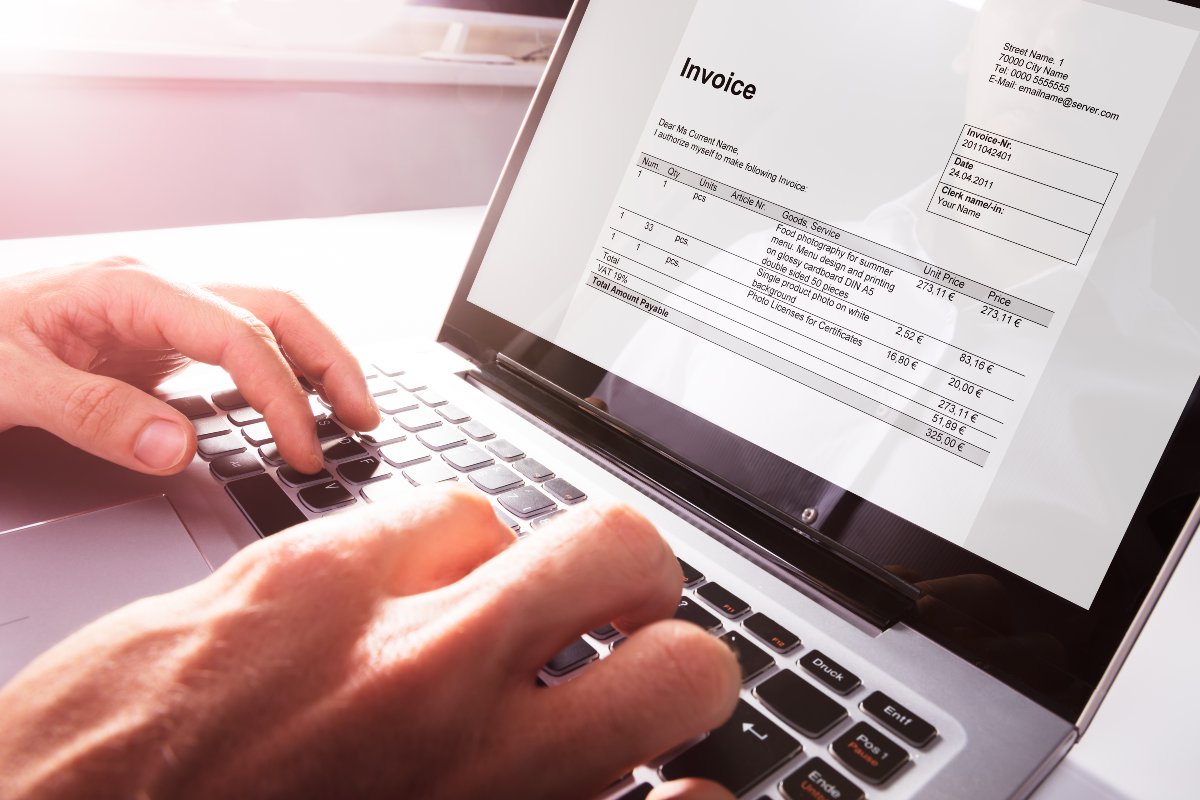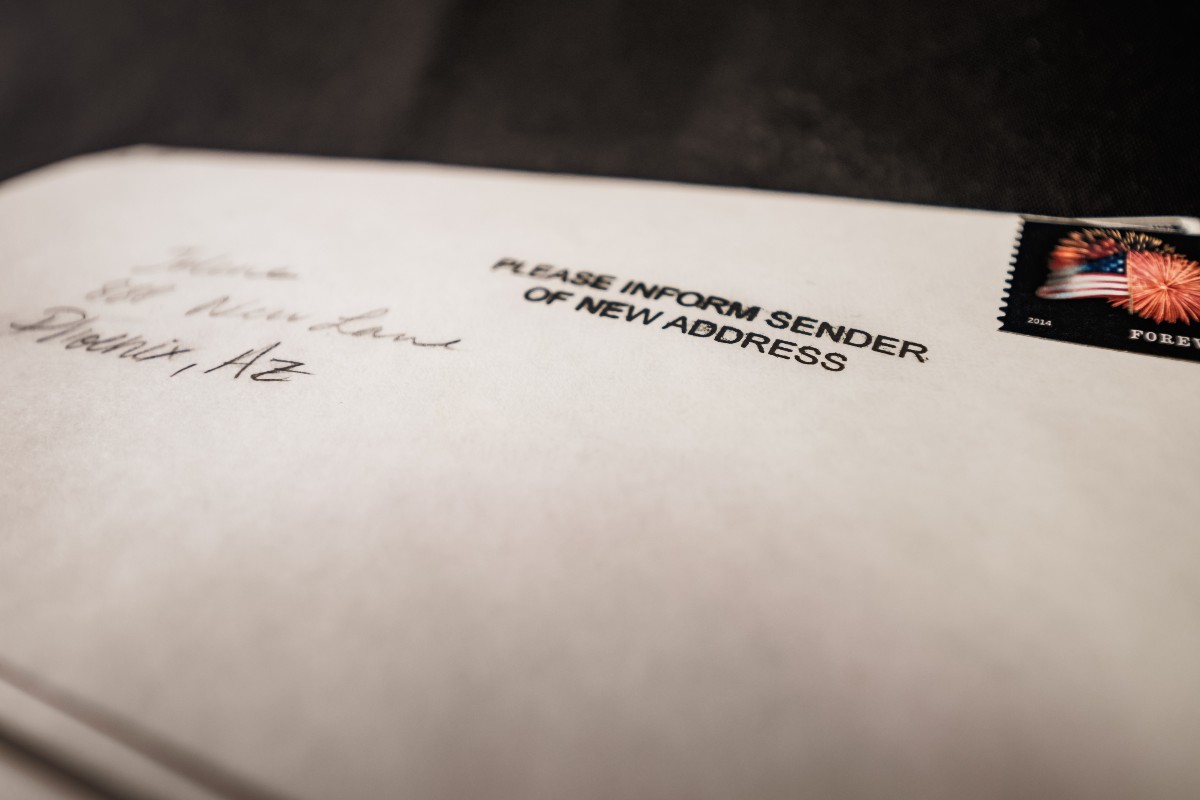International shipping may sometimes feel a little overwhelming, especially since carrier companies require you to fill out special forms and attach them to your package. These are necessary to ensure that your products meet international requirements and pass all the checkpoints on their way to the customers. Still, the process can get confusing when you’re just starting an online business. So how to fill out a customs form for international shipping?
Luckily, whichever company you choose for delivery, the international shipping form will more or less have the same content. The Universal Postal Union (UPU) has a set of rules and guidelines for filling out a customs declaration form. This significantly reduces the hassle and makes shipping from the U.S. more effortless and less stressful.
It’s essential to complete the customs forms carefully and meticulously to avoid any complications in your package’s itinerary. Read on to learn how to fill out a customs form for international shipping from the U.S.

What Forms Do I Need?
To ship to another country or a U.S. military base abroad, you will need a shipping label and a commercial invoice. You can obtain the label from the official websites of shipping companies, such as usps.com, ups.com, fedex.com, and dhl.com. You can also get printed versions of these at the post office.
In most cases, getting a shipping label online is free. However, you still have to pay for postage. The cost of shipping depends on the box size, weight, and delivery time of the package. If you opt for faster shipping and need a large box for the item, you may pay more.
Charges and delivery times may also differ depending on the carrier. Check the following carrier processes to ensure you are meeting international shipping requirements.
USPS
USPS does not require a customs form for First-Class Mail International shipments that weigh less than 16 ounces. These shipments usually include non-negotiable documents or correspondence like medical records, audit files, and legal documents.
For all other cases, you will need a USPS international customs form. For First-Class Package International Service, Priority Mail Express International, and Priority Mail International, you will need to complete the PS 2976-R international customs form. You can either print the form at home or directly at the post office and take it to the clerk along with your package.
For Global Express Guaranteed shipments (1-3 business days), you will need to :
- Fill out the GXG International Air Waybill form;
- Fill out the PS Form 6182 and check specific country requirements here;
- Create a separate GXG customs form.
Some countries may require further documentation, so make sure to also check out individual country listings for specific international shipping conditions.
UPS
UPS has a wide range of customs forms that you can use for international shipments. You can go to their website and see which UPS international shipping forms you need based on your destination. Alternatively, you can answer a couple of questions, and the website will suggest the form you need.

For sending large quantities, UPS requires copies of the commercial invoice. You have to attach multiple copies to the first box and then one copy to each additional package. You also need to print and attach a U.S. Shipper’s Export Declaration (SED) form for shipping commodities over $2,500 worldwide, except Canada and Puerto Rico. Some destinations may also require a U.S. Certificate of Origin, which authenticates the country you ship from.
FedEx
Customs forms are also needed for shipping through FedEx unless you’re shipping documents. You need to attach a commercial invoice and specify what’s inside the box. If you don’t define the contents clearly or give the wrong information, your package may not be delivered. Other documents may be necessary depending on specific countries, which you can check here.
DHL
DHL requires you to fill out a commercial invoice and attach it to your parcel. Similarly, you will need to specify what’s inside the box. DHL offers DHL Packet International, DHL Parcel International Standard, and DHL Parcel International Direct shipping options. You can find more information about each shipping option on their official website.

How to Fill Out a Customs Form for International Shipping
After you’ve obtained all the required documentation, it’s time to fill out the forms. This step is crucial because it serves as a “passport” for your package for customs offices abroad. Make sure to indicate everything accurately to have your parcel delivered on time. This section will explore how to fill out a customs declaration form properly.
Basic Information
Expect to provide the following information for almost every customs form:
- Sender’s full name, address, and phone number;
- Recipient’s full name, address, and phone number;
- Quantity of items inside the box;
- A complete description of items;
- Country of origin;
- Package weight;
- Value of each item;
- Reason for shipment (commercial, gift, return, etc.);
- Conditions of sale (Incoterms);
- Shipping costs.
For item descriptions, make sure to include precise information about the package. For example, don’t just write “beverage” if you’re sending out an apple juice. You can provide additional information like “non-alcoholic” or “juice” to avoid possible misclassification of the package.
Shipment price is usually estimated based on the shipment’s weight and size. For instance, FedEx has several set package types you can choose from. Make sure to specify accurate weights of individual items and the whole package.
You can also optionally attach a list of instructions for undelivered packages. Some carriers may already have established policies for handling lost or delayed shipments. In case they don’t, they may require you to enclose such instructions.
If you know the harmonized tariff code of your goods, you can include them to avoid delays. Harmonized tariff codes are eight to 10-digit numbers that provide product classification, taxes, rules, and regulations that may apply in each country. You can either look up the tariff code yourself or ask for your carrier’s help.
Estimation of Declared Value
Getting the proper estimate of value can sometimes be misleading. On your commercial invoice documents, you should include the price at which you sell the product. Conversely, the declared value on the customs form is the insured price of the shipment.

Carriers will use the declared value in different ways. For example, FedEx uses the declared value for insurance. UPS uses the value for maximum liability and recovery purposes. You can calculate the declared value in two ways:
- The product’s selling price.
- The price that the customer paid for the product.
Please note that you cannot state a value more than what you have charged the customer. However, if the customer paid more than the selling price, you may still indicate the actual selling price of the product. This means that your compensation will only be equal to the selling price if the package is lost or stolen.
Be careful to always indicate the right declared value. Customs offices usually take undervaluation very seriously, and failure to comply with rules and regulations may result in fines. In some cases, the office may even seize your goods. If they question your product’s value, they have the right to ask for proof of purchase from you or the recipient.
Conditions of Sale
If you’re a small online business owner, you can consider using Delivered At Place (DAP) Intercoms. DAT assumes that the seller is responsible for all export proceedings, including packaging, documentation, and shipment, but not import duties and risks. The buyer is responsible for any additional import taxes and duties that the customs office may impose.
Once the package arrives at a certain country’s customs office, the risk is transferred to the buyer. Some countries may require the buyer to pay additional customs fees or fill in more paperwork on certain products. Under a DAT agreement, these duties should be handled by the recipient and not the sender.
A DAT agreement should be set with the customer at the time of the purchase. Make sure to mention the sale condition on your commercial invoice. Failure to do so can lead to additional checks and delays.
Hazardous Materials
If your package includes hazardous materials, you will need to include further documentation and put a relevant label on the box. Additional documentation may require more detailed descriptions of the contents. There are various internationally accepted signs for hazardous materials, but you can double-check with your carrier if they have special labels for such materials. Some examples of hazardous materials include:
- Flammable solids;
- Explosives, gases, and flammable liquids;
- Some battery power equipment;
- Some first aid kits;
- Radioactive materials;
- Toxic substances;
- Genetically modified organisms;
- Corrosives;
- Dry ice.

The purpose of labelling hazardous substances is mere safety. Customs offices typically check these boxes to make sure nothing has leaked. Air shipments usually require red-striped forms, while ocean freight requires blue-striped labels. It is also important to check if the country you’re shipping to accepts a given hazardous material. Customs offices are not responsible for entry denial due to the sender’s lack of information.
Electronic Export Information
You must submit an Electronic Export Information (EEI) form for Schedule B products valued at over $2,500 that require an export license. An export license is a government-issued document that permits exporting certain products like medicine, works of art, plants, and animals. The form should be presented to your carrier, who will then pass it over to the U.S. Customs and Border Protection (CBP) committee.
An EEI can be found electronically through your carrier’s website. The form is different from a commercial invoice, but you can expect to input more or less the same information.
Mistakes to Avoid
Customs forms are an essential part of international shipping. Filling out these forms requires your complete focus and attention. You should pay attention to details and be completely honest. Double-check everything and make sure you don’t:
Give Incorrect Information About the Recipient
Make sure you write the correct address your customer gave you. Otherwise, the shipment may be sent somewhere else, and it can be complicated to retrieve it.
Declare an Incorrect Estimated Value
Don’t try to fool the customs office by declaring a lower price for your items. You can eventually get caught and forced to pay hefty fines. The customs may also hold your package for an unspecified time.
Classify Your Products Incorrectly
If you input the harmonized tariff code yourself, make sure that you don’t input the wrong product class. Your product may be rejected by the Automated Export System and cause delays in delivery.
Enter a Wrong Product Description
Even if the customer asks you to write another description for the product, you should always put down the product description honestly. Failure to do so may be considered fraud and prevent you from shipping your parcel.
Forget to Label Hazardous Materials
If a customs officer identifies an unannounced package with hazardous materials, they can confiscate the package and hold it indefinitely. You may also be held liable for the breach and forced to pay penalties.
Forget to Attach the Customs Form Properly
Your items won’t be shipped if you don’t attach the customs label. Most carriers require you to print two copies and stick one on top and the other one inside. Sometimes they may require an additional copy to keep for their track record. Use transparent packaging tape to attach the customs forms and the shipping label. Make sure that the barcode and all essential information are visible.
Bottom Line
International shipping is not as complicated as it may seem. Customer orders can be shipped anywhere in the world as long as you know how to fill out a customs form. You can find all required customs forms on your carrier’s website. Fill them out online, print them, and attach them to your package accurately, and your parcel will be delivered smoothly and on time to the customer.



